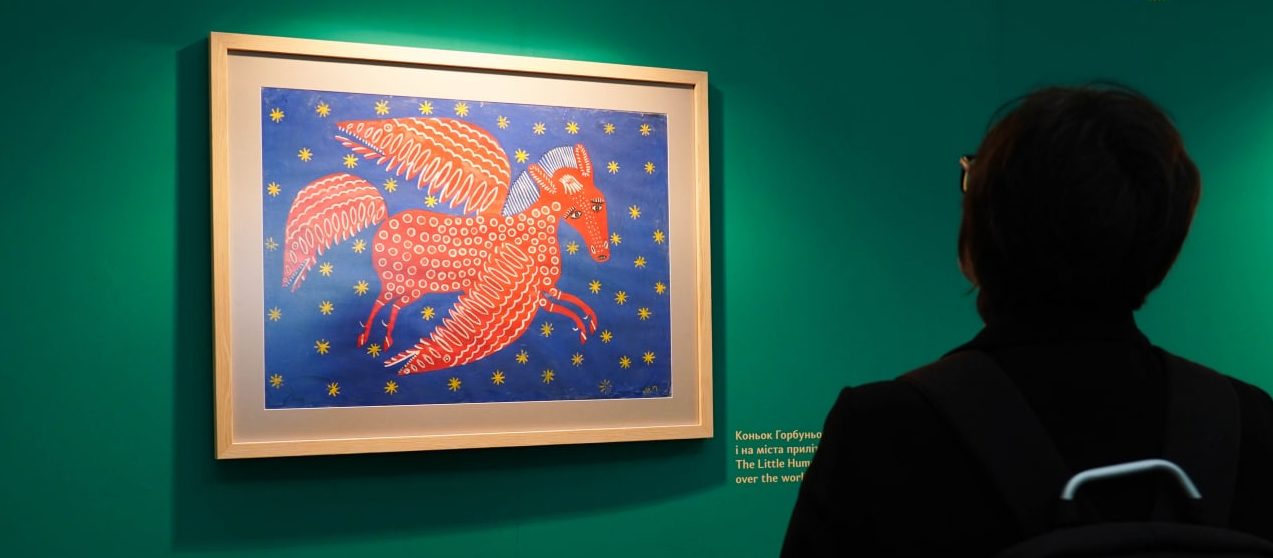"Natalia, come quickly," Anatolii Kharytonov called his wife. "A shell has struck the museum's roof! Call the fire brigade! The fire is spreading; the wind is fueling it.” The firefighters were unable to respond, fearing potential encounters with the Russian military. So Natalia and Anatolii sprang into action, resolving to salvage whatever they could.
They began tearing away the iron bars securing the museum's windows, aided by several locals who rushed to their aid from a nearby park. Crawling through a window, Anatolii and two others retrieved the paintings from an old oak barrel where they had been concealed the previous day.
Unbeknown to the world, the museum guard and his wife had rescued all 14 unique works of Maria Prymachenko, a Ukrainian self-taught artist and an icon of naive art, from the flames engulfing a local history museum in a village near Kyiv.

While Ukrainians mourned the seemingly irreversible artistic loss amid an unraveling Russian invasion, Anatolii transported the salvaged paintings to a clandestine hideaway in his own vehicle.
In the next month, they were relocated multiple times, guaranteeing their protection from potential discovery by the Russians, who had occupied the town in their attempts to encroach on Kyiv in March 2022.
Prymachenko is famous for her whimsical, magical creatures, which draw from folk traditions and legends of local lore. She lived and created in a village near Ukraine’s capital Kyiv. Her works are no strangers to European galleries: starting from the 1930s, her paintings were displayed in various capitals worldwide, earning her widespread acclaim.
14 of them were saved by the Ivankiv museum guard, his wife, and other locals, who risked their lives to preserve these works for humanity.
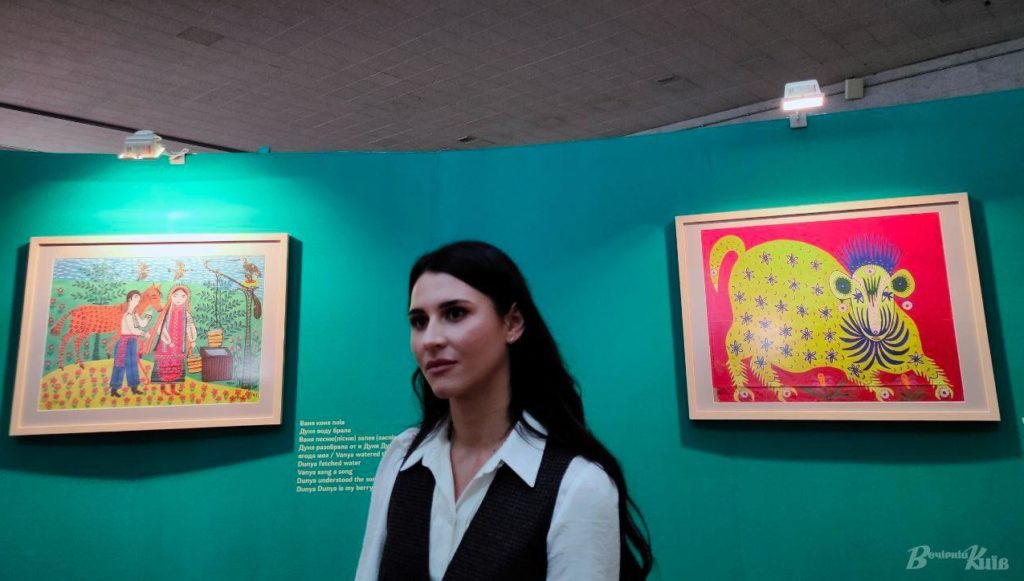
Russians destroy Ukrainian culture
Russian bombs not only claim Ukrainian lives but also obliterate the cultural heritage of Ukrainians.
Russian missiles relentlessly decimate Ukrainian museums, libraries, churches, mosques, universities, and theaters. According to the Ministry of Culture and Information Policy of Ukraine, between 24 February 2022 and 25 June 2023, 664 cultural heritage sites in Ukraine were damaged or destroyed. Among them were 211 architectural monuments, 179 historical monuments, 18 objects of monumental art, and 16 archaelogical landmarks.
Ivankiv Museum: a tragic loss amid war
The museum of Mariya Prymachenko in Ivankiv, destroyed during the Russian occupation. Photo: Kyivregiontours
The tragedy also befell the Ivankiv Museum of History and Local Lore, located amid the swamp-filled forests of Polissia.
Prior to the full-scale Russian invasion, the Ivankiv Museum was overseen by a caretaker who also held the position of director, alongside two guards.
In addition to the customary exhibits found in local history museums - such as taxidermied animals, antiquated household artifacts, and folk clothing - the museum's six halls showcased a diverse array of works by local artists. Among these treasures were textiles and embroidery crafted by the decorative arts master Hanna Veres.
However, the true jewel in the museum's crown were the paintings of Maria Prymachenko.
Through her phantasmagorical creations, Prymachenko breathed life into local fairy tales, legends, and her own mystic visions, often regarded as reflections of the tumultuous 20th century, including the horrors of the Stalinist Holodomor, which claimed millions of Ukrainian lives.
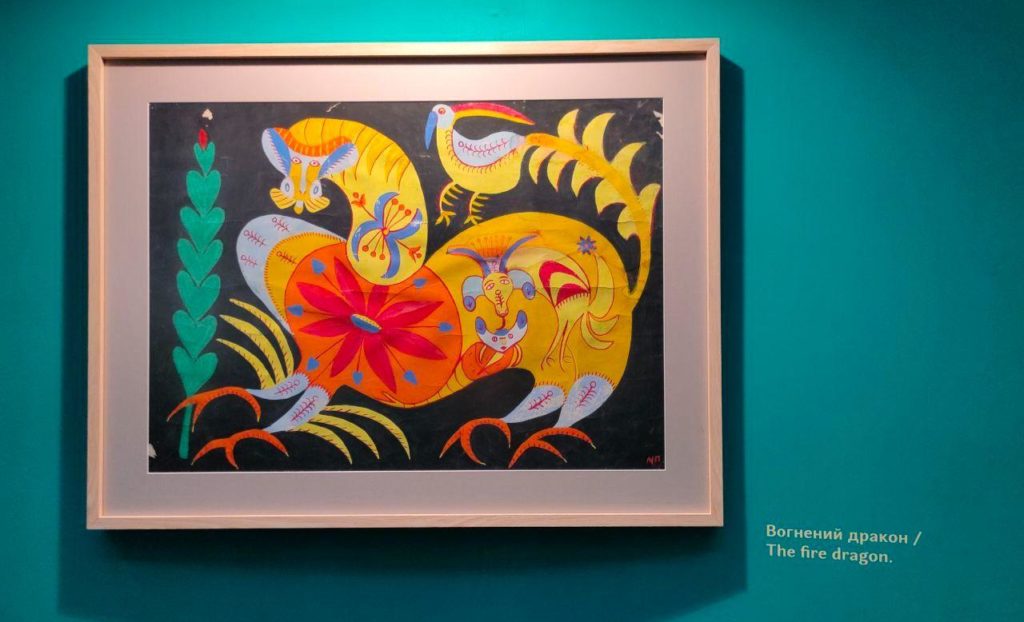
How Ivankiv locals saved Prymachenko's art from flames
On the morning of 25 February 2022, as the Russian invasion unfolded, the inhabitants of Ivankiv sought refuge in their basements and cellars. Overhead, Russian military helicopters patrolled the skies above the Teteriv River, which meanders through the town.
Meanwhile, lengthy convoys of Russian tanks traversed the bypass road encircling Ivankiv, en route to Kyiv. Russian armored personnel carriers rumbled through the otherwise deserted streets of the town. In the vicinity of the river bridge, a sudden Ukrainian military ambush ignited a ferocious battle, marked by a cacophony of gunfire and explosions.
Living next to the Ivankiv Museum of History and Local Lore were Natalia and Anatolii Kharytonov, their yard separated from the museum by a narrow road. Anatolii serves as a museum guard, while Natalia is deputy director at the Ivankiv House of Children's Creativity.
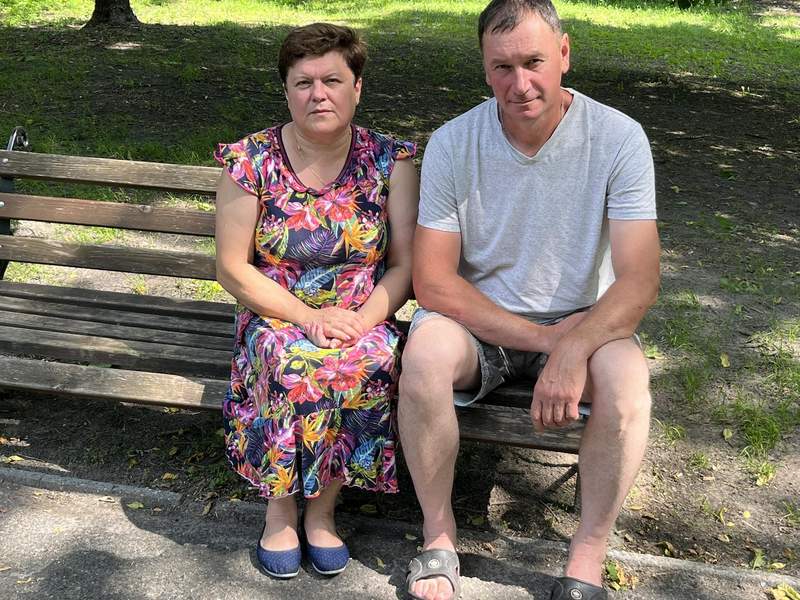
Positioned near the village center, the local history museum now stands on the periphery of the park, its charred remains a poignant testament to the devastation wrought by the Russian invasion.
Amidst the chaos, the Kharytonov family, like their fellow townsfolk, sought refuge in their cellar, awaiting the cessation of the battle raging nearby. As the fighting ceased, Anatolii emerged from the cellar to survey the unfolding scene, returning with alarming news for his wife.
The couple rescued Prymachenko’s works amid the fire. Yet, Natalia worried they couldn’t save the cloths crafted by the renowned weaver Hanna Veres: "If I had known that they were unique, that they could not be restored, I might have shouted for them to be taken out as well. But it happened as it happened."
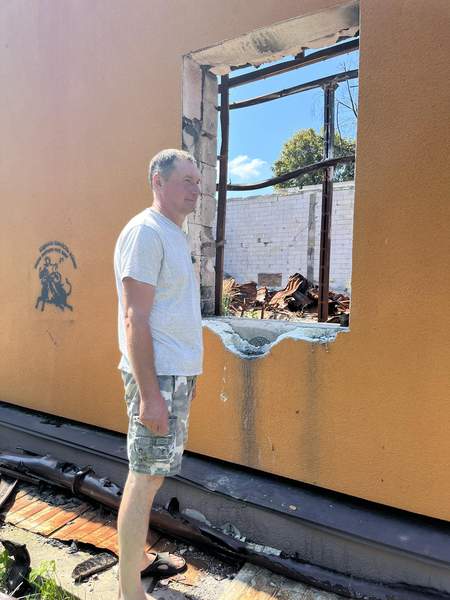
"It was terrifying. Smoke enveloped us, the ceiling ominously creaked and swayed, threatening to collapse at any moment. Yet, our desire to preserve these paintings outweighed all fear. This is our history; our children deserve to know their unjustly overlooked cultural heritage, not the narratives of Russian so-called great culture,” Anatolii explained.
Nadiia Biriuk, who has been head of the culture department of the Ivankiv administration since 1996, played a pivotal role in safeguarding Prymachenko's legacy.
Present at the museum during the fire, she proposed relocating the rescued paintings from the Kharytonovs' yard to an undisclosed location.
Biriuk orchestrated the operation, ensuring the safety of the artworks.As the Russian forces consolidated their occupation of Ivankiv, they relentlessly searched for Nadiia Biriuk, suspecting her knowledge of Maria Prymachenko's hidden artworks. Despite numerous visits to her residence, Nadiia evaded capture, Ultimately, their efforts to locate either the paintings or those responsible for concealing them proved futile.
Maria Prymachenko's Legacy: Rescued from flames, revered on the global stage
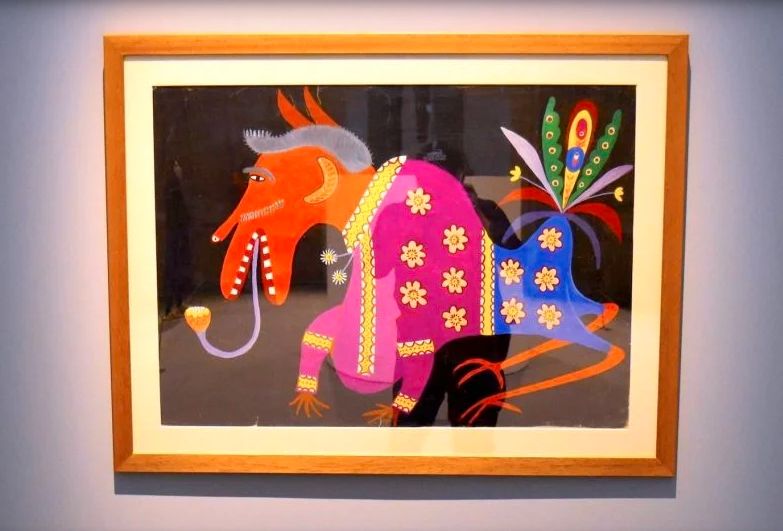
As the fire ravaged the Ivankiv Museum with Prymachenko's precious paintings amid the unfolding Russian invasion, Ukrainians were in a somber mood. Little did anyone know that every single one of the artist's creations had been miraculously rescued. With the liberation of Ivankiv, word swiftly spread across Ukraine, later capturing the attention of Europe, reigniting discussions surrounding Prymachenko's cultural legacy.

Cecilia Alemani, the curator of the main exhibition at the 59th Venice Biennale, first encountered Prymachenko's works through international media reports. Impressed by their significance, she selected one of her paintings to be featured in the Biennale's curated exhibition titled "Milk of Dreams."
In the spring of 2022, an auction in Venice was held to support Ukraine, where Prymachenko's work fetched an impressive EUR 110,000. This event spurred further creative endeavors, including the development of fashion collections by Ukrainian brands 91LAB and RCR Khomenko, inspired by Maria Prymachenko's works.
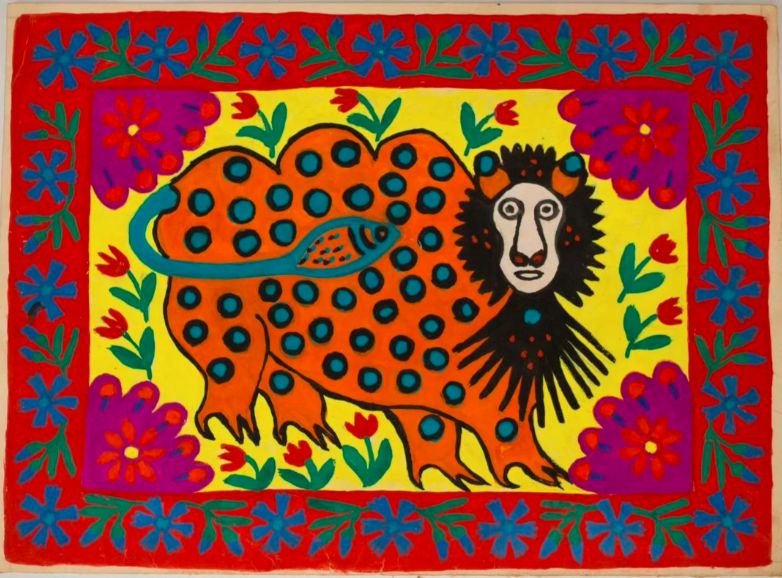
In July 2023, an exhibition of Maria Prymachenko was held at the prestigious Saatchi Gallery in London.
Meanwhile, in London, Polish designer Nisia Jędrychowska crafted a large tapestry showcasing animals from Prymachenko's paintings, embroidered by displaced Ukrainian women.

Spanning four by five meters, this textile masterpiece incorporates 100 images from the artist's repertoire, aiming to elevate Prymachenko's legacy and shed light on the experiences of women who fled the Russian invasion.
In the United States, a mural depicting the artwork "The Dove Spreads Its Wings, Wants Peace on Earth" was created on a house wall in St. Louis, while in San Francisco, a seven-meter reproduction of the same work was painted in the station square.
Prymachenko’s “The dove spread its wings” reproduced in San Francisco. Photo: Instagram @davidsolnit
At the heart of this reinvigoration is the feat of Ivankiv's residents, who risked their lives to rescue Prymachenko's legacy from the inferno, guided by a desire to preserve Ukraine’s artistic heritage for generations to come.
Related:
- 10 interesting facts about Ukrainian folk artist Mariya Prymachenko
- Paintings of Ukrainian Naïve Art icon Prymachenko come to life
- Ukraine’s 30: prominent Ukrainians who changed the country and the world. Part 1: Culture
- Russian war’s cruel whims: some Ukrainian towns rebuild, others remain decimated
- Legendary art home of Ukrainian folk artist drowns in rising waters after dam blast

